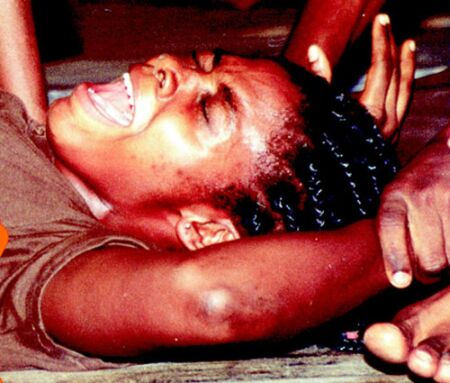
Date : 20 December 2012
The United Nations General Assembly today unanimously passed a resolution banning the practice of Female Genital Mutilation. This significant milestone towards the ending of harmful practices and violations that constitute serious threat to the health of women and girls was taken by the 194 UN Member States, who approved five General Assembly resolutions today on advancing women’s rights, including one on intensifying global efforts for the elimination of female genital mutilations (FGM).
Female Genital Mutilation affects about 100-140 million women and girls worldwide, and each year it is estimated that an additional three million girls are at risk of being subjected to the practice globally.
“This is a very important step to bringing about cultural and attitudinal change. Just as important though, is working on the ground with governments, communities and other partners to end FGM. UN Women’s experience in Burkina Faso, Benin and other countries shows that while efforts to criminalize FGM are vital, they need to be backed up with services for victims, engaging key influencers and supporting community-based activities to change social norms, as well as practical actions to bring perpetrators to justice, said John Hendra, UN Women Assistant-Secretary General and Deputy Executive Director.
The FGM resolution urges countries to condemn all harmful practices that affect women and girls, in particular female genital mutilations, and to take all necessary measures, including enforcing legislation, awareness-raising and allocating sufficient resources to protect women and girls from this form of violence. It calls for special attention to protect and support women and girls who have been subjected to female genital mutilations, and those at risk, including refugee women and women migrants.
As requested in the Resolution, UN Women will continue working to protect and promote the rights of women and girls against female genital mutilations and to end this harmful practice engaging all parts of society, including governments, civil society, private sector and others.
Related links:
– See more at: http://www.unwomen.org/en/news/stories/2012/12/united-nations-bans-female-genital-mutilation#sthash.KwPXh972.dpuf
WORLD HEALTH ORGANIZATION : Health complications of female genital mutilation
Where available data allow, variations by type are specified. Generally speaking, risks increase with increasing severity of the procedure. As there are limited data on the different practices included in Type IV female genital mutilation, information on these forms is not included.
Immediate risks of health complications from Types I, II and III
Severe pain: Cutting the nerve ends and sensitive genital tissue causes extreme pain. Proper anaesthesia is rarely used and, when used, not always effective. The healing period is also painful. Type III female genital mutilation is a more extensive procedure of longer duration (15–20 minutes), hence the intensity and duration of pain are more extensive. The healing period is extended and intensified accordingly. (1)
Shock can be caused by pain and/or haemorrhage. (2)
Excessive bleeding (haemorrhage) and septic shock have been documented. (3)
Difficulty in passing urine, and also passing of faeces, can occur due to swelling, oedema and pain. (4)
Infections may spread after the use of contaminated instruments (e.g. use of same instruments in multiple genital mutilation operations), and during the healing period. (5)
Human immunodeficiency virus (HIV): Use of the same surgical instrument without sterilization could increase the risk for transmission of HIV between girls who undergo female genital mutilation together (6). In one study an indirect association was found (7), but no direct association has been documented (8), perhaps because of the rarity of mass genital cutting with the same instrument, and the low HIV prevalence among girls of the age at which the procedure is performed.
Death can be caused by haemorrhage or infections, including tetanus and shock. (9)
Psychological consequences: The pain, shock and the use of physical force by those performing the procedure are mentioned as reasons why many women describe female genital mutilation as a traumatic event. (10)
Unintended labia fusion: Several studies have found that, in some cases, what was intended as a Type II female genital mutilation may, due to labia adhesion, result in a Type III female genital mutilation. (11)
Repeated female genital mutilation appears to be quite frequent in Type III female genital mutilation, usually due to unsuccessful healing. (12)
References
1. Type I and II: El-Defrawi et al., 2001; Dare et al., 2004; Malmström, 2007. Type III: Boddy, 1989; Dirie and Lindmark, 1992; Chalmers and Hashi, 2000; Gruenbaum, 2001; Johansen, 2002
2. Type I and II: Egwuatu and Agugua, 1981; Agugua and Egwuatu, 1982. Type III: Dirie and Lindmark, 1992; Almroth et al., 2005a
3. Dirie and Lindmark, 1992; Jones et al., 1999; Chalmers and Hashi, 2000; Dare et al., 2004; Yoder et al., 2004
4. Type I and II: El-Defrawi et al., 2001; Dare et al., 2004; Yoder et al., 2004. Type III: Dirie and Lindmark, 1992; Chalmers and Hashi, 2000; Yoder et al., 2004; Almroth et al., 2005a
5. Dirie and Lindmark, 1992; Chalmers and Hashi, 2000; Almroth et al., 2005a,b
6. Klouman et al., 2005; Morison et al., 2001
7. Yount and Abraham, 2007
8. Morison et al., 2001; Okonofua et al., 2002; Klouman et al., 2005
9. Mohamud, 1991
10. Boddy, 1989; Johansen, 2002; Talle, 2007; Behrendt and Moritz, 2005; Malmström, 2007
11. Egwuatu and Agugua, 1981; Agugua and Egwuatu, 1982; Dare et al., 2004; Behrent, 2005
12. Dirie and Lindmark, 1992; Chalmers and Hashi, 2000; Johansen, 2006b
Long-term health risks from Types I, II and III (occurring at any time during life)
Pain: Chronic pain can be due to trapped or unprotected nerve endings.(13)
Infections: Dermoid cysts, abscesses and genital ulcers can develop, with superficial loss of tissue(14). Chronic pelvic infections can cause chronic back and pelvic pain(15). Urinary tract infections can ascend to the kidneys, potentially resulting in renal failure, septicaemia and death. An increased risk for repeated urinary tract infections is well documented in both girls and adult women(16).
Keloid: Excessive scar tissue may form at the site of the cutting(17).
Reproductive tract infections and sexually transmitted infections: An increased frequency of certain genital infections, including bacterial vaginosis has been documented(18). Some studies have documented an increased risk for genital herpes, but no association has been found with other sexually transmitted infections(19).
Human immunodeficiency virus (HIV): An increased risk for bleeding during intercourse, which is often the case when defibulation is necessary (Type III), may increase the risk for HIV transmission. The increased prevalence of herpes in women subjected to female genital mutilation may also increase the risk for HIV infection, as genital herpes is a risk factor in the transmission of HIV.
Quality of sexual life: Removal of, or damage to highly sensitive genital tissue, especially the clitoris, may affect sexual sensitivity and lead to sexual problems, such as decreased sexual pleasure and pain during sex. Scar formation, pain and traumatic memories associated with the procedure can also lead to such problems(20).
Birth complications: The incidences of caesarean section and postpartum haemorrhage are substantially increased, in addition to increased tearing and recourse to episiotomies. The risks increase with the severity of the female genital mutilation(21). Obstetric fistula is a complication of prolonged and obstructed labour, and hence may be a secondary result of birth complications caused by female genital mutilation(22). Studies investigating a possible association between female genital mutilation and obstetric fistulas are under way.
Danger to the newborn: Higher death rates and reduced Apgar scores have been found, the severity increasing with the severity of female genital mutilation(23).
Psychological consequences: Some studies have shown an increased likelihood of fear of sexual intercourse, post-traumatic stress disorder, anxiety, depression and memory loss. The cultural significance of the practice might not protect against psychological complications.
References
13. Akotionga et al., 2001; Okonofua et al., 2002; Fernandez-Aguilaret and Noel, 2003
14. Egwautu and Agugua 1981; Dirie and Lindmark, 1992; Chalmers and Hashi, 2000; Rouzi et al., 2001; Okonofua et al., 2002; Thabet and Thabet, 2003
15. Rushwan, 1980; Klouman et al., 2005
16. Ismail, 1999; Knight et al., 1999; Almroth et al., 2005a
17. Jones et al., 1999; Okonofua et al., 2002
18. Morison et al., 2001; Okonofua et al., 2002; Klouman et al., 2005; Elmusharaf et al., 2006b
19. Morison et al., 2001; Okonofua et al., 2002; Klouman et al., 2005; Elmusharaf et al., 2006b
20. Knight et al., 1999; Thabet and Thabet, 2003; El-Defrawi et al., 2001; Elnashar and Abdelhady, 2007; Johansen, 2007
21. Vangen et al., 2002; WHO Study Group on Female Genital Mutilation and Obstetric Outcome, 2006
22. Tahzib, 1983; Rushwan, 2000
23. Vangen et al., 2002; WHO Study Group on Female Genital Mutilation and Obstetric Outcome, 2006
24. Whitehorn, 2002; Behrendt and Moritz, 2005; Lockhat, 2006
25. Behrendt and Moritz, 2005; Lockhat, 2006; Nour et al., 2006; Elnashar and Abdelhady, 2007
Additional risks for complications from Type III
Later surgery: Infibulations must be opened (defibulation) later in life to enable penetration during sexual intercourse and for childbirth. In some countries it is usual to follow this by re-closure (reinfibulation), and hence the need for repeated defibulation later. Re-closure is also reportedly done on other occasions.(26)
Urinary and menstrual problems: Slow and painful menstruation and urination can result from the near-complete sealing off of the vagina and urethra(27). Haematocolpus may need surgical intervention(28). Dribbling of urine is common in infibulated women, probably due to both difficulties in emptying the bladder and stagnation of urine under the hood of scar tissue(29).
Painful sexual intercourse: As the infibulation must be opened up either surgically or through penetrative sex, sexual intercourse is frequently painful during the first few weeks after sexual initiation(30). The male partner can also experience pain and complications(31).
Infertility: The association between female genital mutilation and infertility is due mainly to cutting of the labia majora, as evidence suggests that the more tissue that is removed, the higher the risk for infection(32).
References
26. Berggren, 2004, 2006; Nour et al., 2006 27. Akotionga et al., 2001; Knight et al., 1999; Almroth et al., 2005a; Nour et al., 2006 28. Dirie and Lindmark ,1992 29. Egwautu and Agugua, 1981; Agugua and Egwautu, 1982; Dirie and Lindmark, 1992 ; Ismail, 1999; Chalmers and Hashi, 2000; Njue and Askew, 2004 30. Talle, 1993; Akotionga et al., 2001; Gruenbaum, 2006; Nour et al., 2006 31. Dirie and Lindmark, 1992; Almroth et al., 2001 32. Almroth et al., 2005b




